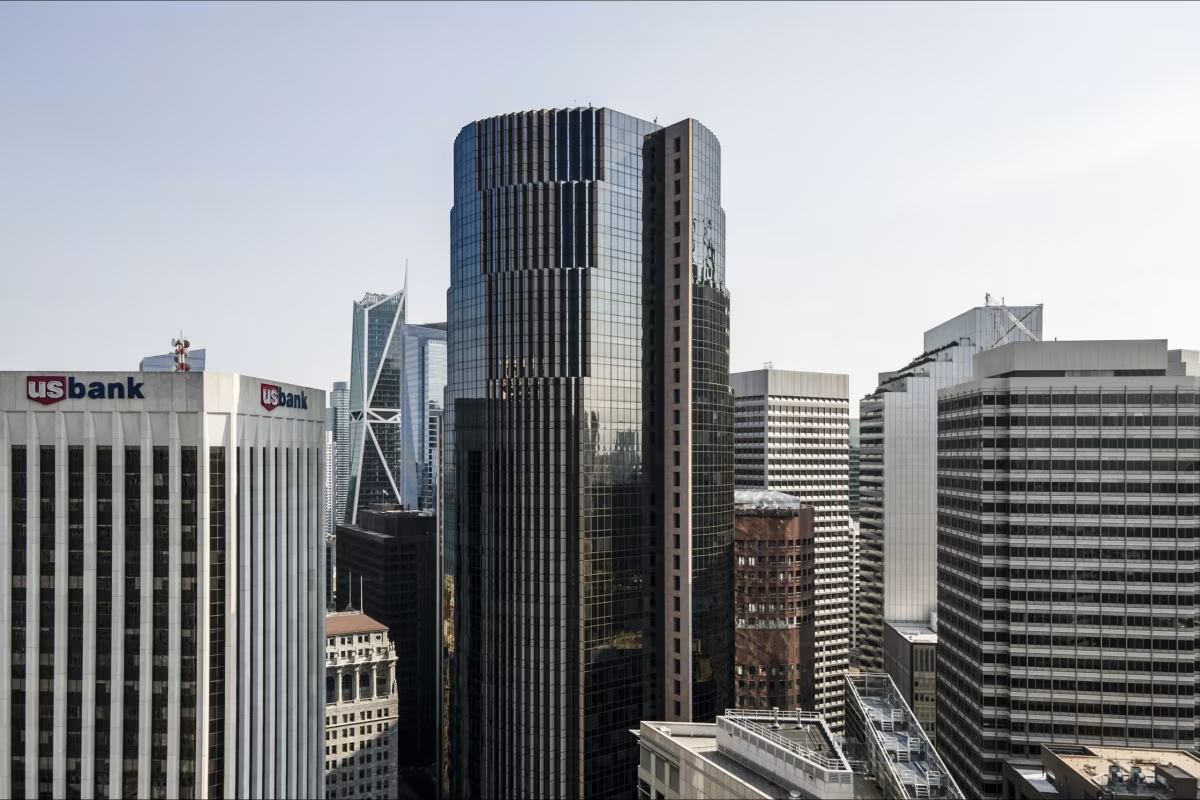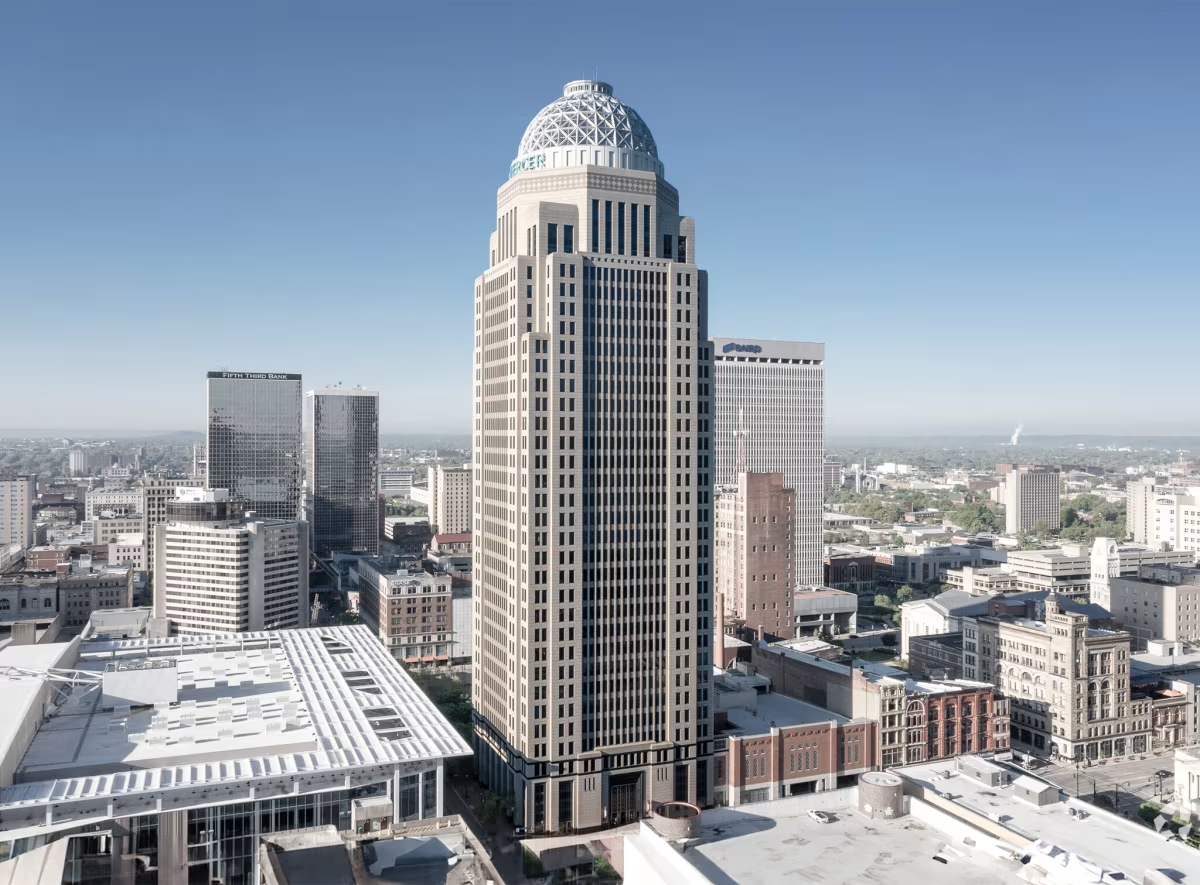101 California Street Building vs 400 West Market


Comparing the 101 California Street Building and the 400 West Market is compelling because they were both designed by Johnson/Burgee Architects, yet they stand in different cities (San Francisco, CA and Louisville, KY), and were completed a decade apart.
What this will allow us to see, is how the same firm's approach adapted to different places in different periods of time.
Height & Size
The 101 California Street Building is clearly the larger tower of the two, both in terms of height and number of floors. It rises to 600ft (183m) with 48 floors above ground, while the 400 West Market reaches 548ft (167m) with 35 floors above ground.
Of course, each project may have faced different briefs or regulatory constraints, which we don't really know about and could also explain the outcome.
Architectural Style
Both the 101 California Street Building and the 400 West Market were designed in line with the aesthetic conventions of the Postmodernism style.
The 400 West Market was designed at a moment when the Postmodernism style was already in decline, making it more of a lingering expression of the movement. In contrast, the 101 California Street Building was built when the style still carried greater cultural weight.
Uses
Both the 101 California Street Building and the 400 West Market were designed to serve as commercial towers, and that has remained their main use since their completion, serving similar roles in the urban fabric.
The 400 West Market also provides 789 parking spaces.
Structure & Facade
Both towers share the same structural solution, a Frame system.
A frame structure uses a grid of columns and beams to carry the building's loads. This frees the walls from structural duties, allowing for flexible floor plans and larger windows.
However, when it comes to the facade, both buildings use different approaches. The 101 California Street Building uses a Curtain Wall facade, while the 400 West Market uses a Modular facade.
A Curtain Wall facade like the one seen in the 101 California Street Building uses a lightweight glass curtain wall hung from the structure, while a modular facade like the one seen in the 400 West Market employs prefabricated panels, often mixing solid surfaces with smaller windows.
| 101 California Street Building | 400 West Market | |
|---|---|---|
| Johnson/Burgee Architects | Architect | Johnson/Burgee Architects |
| 1979 | Construction Started | 1991 |
| 1982 | Year Completed | 1993 |
| Postmodernism | Architectural Style | Postmodernism |
| Commercial | Current Use | Commercial |
| 48 | Floors Above Ground | 35 |
| 183 m | Height (m) | 167 m |
| 116,264 m² | Usable Area (m²) | 58,868 m² |
| Frame | Structure Type | Frame |
| Steel | Vertical Structure Material | Reinforced Concrete |
| Concrete | Horizontal Structure Material | Steel And Concrete |
| No | Facade Structural? | No |
| Granite, Glass | Main Facade Material | Glass, Steel, Granite |
| Hines Interests Limited Partnership | Developer | Gerald D. Hines Interests |
| CA | State | KY |
| San Francisco | City | Louisville |
| 101 California Street | Address | 400 West Market Street |